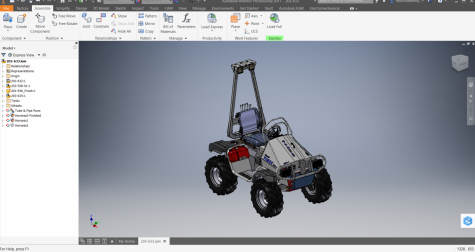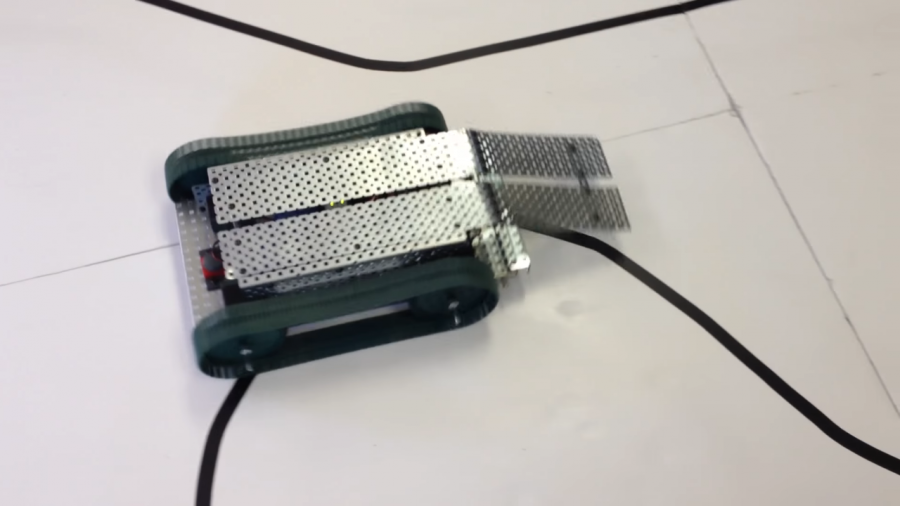Senior Engineering Report: September
October 3, 2018
After two summers and a year of AP Computer Science, Ms. Johnson’s senior engineering students have primarily spent this September getting reacquainted with some familiar activities from sophomore year. However, the class still has some impressive accomplishments to show off (even if the main focus is just review).
Most of the month was used to work with VEX Robotics, which combines building hardware with programming software. Students begin by using physical parts to assemble whatever their minds can imagine. Then, they can hook up special parts of their design (such as motors and sensors) to a VEX Cortex. From there, students can write their own code that will tell the special parts how to operate. Once this code is downloaded to the Cortex, the finished product will emerge as a fully-functioning robot!
Our senior engineers have dealt with VEX before, but their latest robotics task presented them with a new challenge: building a vehicle that can automatically travel through a course. One of the earliest designs to come out of this task was an ambitious tank-like vehicle that flawlessly ran the course. The group responsible for this robot got to demonstrate their creation to some notable guests: Mr. Bedwell, Kibby, and even a pair of US Army Recruiters!
https://www.youtube.com/watch?v=cQv9GKIPYJM
Group member Chris Gauthier commented that he enjoyed the project, stating, “Getting hands-on and making stuff: that’s cool… [as well as] being able to run it.”
So how exactly do these robots work? The answer: infrared technology. Three “line followers” are attached to the underside of the vehicle and wired to the Cortex. These line followers are constantly detecting light values of the ground underneath them: bright surfaces yield low values, while dark surfaces yield high values. The line followers then relay this information back to the Cortex, which uses coded instructions to interpret the values and power the vehicle’s motors accordingly. If the central line follower detects a dark light value from the course path, then the Cortex knows the robot is on-track; all motors receive forward power. If either the left or right line follower detects the path, then the robot counter-steers to straighten itself out.
Ms. Johnson says that this type of technology can have several real-life applications: for example, self-driving cars could provide a means of transportation for people who can’t drive because of disabilities.
While the VEX project was certainly fun to work on, the engineering team still had more to re-familiarize themselves with. Next on the agenda was Autodesk Inventor, a sophisticated 3D-modelling program that sees real use in the engineering industry. The program might seem very complicated at first, but the basic features are actually quite simple: most of the work involves setting the position and dimensions of shapes within a plane. With an assignment to re-create a series of simple 3D objects, the students produced some impressive results.

Finally, Ms. Johnson capped off the month with a set of math practice problems to get the class ready for the upcoming SAT. She received a “thank you” message from student Erick Plascencia, who commented on Google Classroom that the problems were very helpful.
That wraps up this month’s engineering report. We may produce more reports in the future, so stay tuned with Spartan Ink for updates to come!


